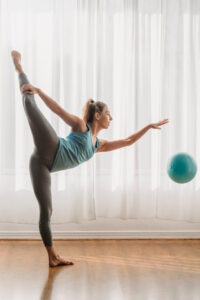
As the world’s foremost expert on Pilates for Balance and Coordination in Rehabilitation, I am dedicated to exploring the numerous benefits of Pilates in improving balance and coordination for individuals undergoing rehabilitation. Balance and coordination are vital components of daily life, and disruptions in these areas can result from injuries, neurological conditions, or the aging process. Pilates, with its focus on core strength, stability, and controlled movements, offers a holistic approach to enhancing balance and coordination. In this comprehensive guide, we will delve into how Pilates helps with rehabilitation, its impact on coordination, its role in improving balance, and the specific exercises that target these aspects.
How does Pilates help with rehabilitation?
Pilates is highly effective in the rehabilitation process due to several key reasons:
- Core Strength and Stability: Pilates targets the deep core muscles, which are essential for maintaining stability and proper body alignment. A strong core provides a solid foundation for rehabilitation exercises and everyday movements.
- Mind-Body Connection: Pilates emphasizes a strong mind-body connection, promoting body awareness and conscious control over movement. This heightened awareness is particularly valuable during rehabilitation, as it helps individuals focus on proper form and alignment.
- Low-Impact Nature: Many Pilates exercises are low-impact, making them safe and suitable for individuals with varying levels of mobility and rehabilitation needs.
- Customizability: Pilates exercises can be modified to accommodate individual capabilities and limitations, allowing for a personalized approach to rehabilitation.
- Functional Movement Patterns: Pilates focuses on functional movement patterns that mimic everyday activities. By practicing these movements, individuals can improve their ability to perform daily tasks more efficiently.
Does Pilates help with coordination?
Yes, Pilates can be highly beneficial in improving coordination. Pilates exercises require a high level of concentration and control, which helps individuals develop better coordination skills. By performing precise and controlled movements, individuals enhance their ability to move their body in a coordinated and efficient manner.
Additionally, Pilates exercises often involve working with different body parts simultaneously, further enhancing coordination between various muscle groups. This increased coordination can have a positive impact on daily activities and functional movement.
How can Pilates help with balance?
Pilates is an excellent tool for improving balance. Many Pilates exercises challenge stability and balance by requiring individuals to maintain specific positions or perform movements on an unstable surface, such as a stability ball or a Pilates reformer.
By regularly engaging in balance-focused Pilates exercises, individuals can strengthen the muscles responsible for maintaining balance and stability. This enhanced strength and stability can reduce the risk of falls and improve overall balance.
What exercises improve balance and coordination?
Several Pilates exercises target balance and coordination:
- Single Leg Stretch: This exercise requires individuals to maintain balance on one leg while engaging the core and performing controlled leg movements.
- Standing Arabesque: Standing on one leg, individuals extend the opposite leg backward while maintaining balance and control.
- Rolling Like a Ball: This exercise challenges coordination by requiring individuals to roll backward and return to a seated position while maintaining balance.
- Tree Pose (Pilates Variation): Similar to the yoga tree pose, this Pilates variation challenges balance and coordination.
- Seated Spine Twist: Sitting on a stability ball or a Pilates chair, individuals rotate their upper body, engaging the core and improving coordination.
Summary
Pilates for Balance and Coordination in Rehabilitation offers a comprehensive approach to improving balance and coordination for individuals in the rehabilitation process. With its focus on core strength, mind-body connection, and functional movement patterns, Pilates is a valuable tool for enhancing stability and promoting better coordination. Balance-focused Pilates exercises, such as the Single Leg Stretch, Standing Arabesque, and Seated Spine Twist, can help individuals strengthen the muscles responsible for balance and stability. By incorporating Pilates into the rehabilitation program, individuals can experience improved functional movement, reduced risk of falls, and enhanced overall balance and coordination.